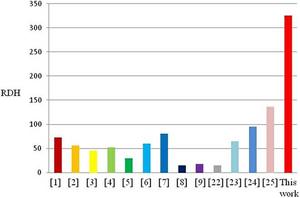Exploring Your Options – Robotics & Automation News

In an era when social networks are becoming increasingly integrated into our daily lives, many are considering how to reduce their influence without completely abandoning their capabilities.
We explore how you can change the way you interact with Facebook to ensure greater control over your personal information and the time spent online.
In the face of growing concerns about privacy, data security, and the addictive nature of social media, many Facebook users are considering deleting their accounts.
However, completely removing oneself from the platform may not be the best solution for everyone. There are various alternatives to deleting your Facebook page that can help you maintain a presence on the network while minimizing its negative effects.
This article will explore the options available to users who want to reduce their Facebook footprint without entirely erasing their digital identity.
From adjusting privacy settings and curating friend lists to using third-party tools and adopting digital mindfulness practices, we will discuss how you can regain control over your Facebook experience and create a healthier relationship with the platform.
It is not necessary to immediately enter the “how to delete fb page” in the search box. Deleting your Facebook page isn’t always the only solution.
Several alternatives offer ways to manage your online presence without permanently erasing your page. Here’s a plan exploring some options:
First place to start
- Download your data (optional): If you want to keep your page’s content, such as posts and photos, consider downloading your data before deletion. Facebook allows you to download a copy of your information, including page data.
- Page Roles: Ensure you have the necessary admin access to delete the page. Only individuals with admin roles can permanently remove a Facebook page.
1. Unpublish Your Page
- Temporary Hide: This option makes your page invisible to the public while retaining all content and data. It’s ideal if you want to revamp or need to break your page before relaunching.
- Easy to Reverse: You can republish the page anytime, making it a flexible solution.
- How-to: Go to your Page Settings > General > Page Visibility > Select “Page unpublished” > Save Changes.
2. Change Page Roles and Access
- Delegate Responsibility: If you’re overwhelmed with managing the page, consider adding other admins or editors to share the workload.
- Limit Your Involvement: Change your role to a lower access level (editor, moderator) to reduce your responsibilities.
- How-to: Go to your Page Settings > Page Roles > Add or adjust roles as needed.
3. Adjust Page Settings and Content
- Review Privacy Settings: Ensure your page’s privacy settings align with your current needs. You can control who sees your posts, messages, and other information.
- Content Management: Archive old content or delete specific posts that no longer represent your page’s purpose.
- Update Page Information: Refresh your page’s description, contact information, and profile picture to reflect any changes.
4. Merge Duplicate Pages
- Consolidate Presence: If you have multiple pages representing the same entity, consider merging them to avoid confusion and maintain a consistent brand identity.
- Increased Engagement: Merging pages can combine your audience and potentially boost engagement.
- How-to: Facebook offers a merging tool accessible through the “General” settings of your page.
5. Utilize Facebook Groups
- Community Building: If your goal is to foster a more interactive community, consider creating a Facebook Group linked to your page. Groups offer features that encourage discussion and engagement.
- Targeted Reach: Groups allow you to connect with specific segments of your audience based on interests or demographics.
Additional Tips
Schedule Posts: Utilize scheduling tools to maintain your page’s activity even when you’re busy. You can read a variety of authors , for example Eugene Tsarkov, in search of topics and inspirations for your articles.
- Content Strategy: Re-evaluate your content strategy and focus on creating engaging and relevant posts.
- Analyze Insights: Use Facebook Insights to understand your audience and tailor your content accordingly.
So, when you’re considering how to delete fb page, you should start from your specific goals and circumstances. Evaluate your needs and explore these options before making a final decision about your Facebook page.
Expanding on Alternatives to Deleting Your Facebook
To provide a more comprehensive understanding of your options, let’s delve deeper into each alternative and explore additional considerations:
1. Unpublishing Your Page
Benefits: This is a reversible action, allowing you to bring your page back online whenever you’re ready. It’s perfect for temporary breaks, website renovations, or rebranding efforts.
- Drawbacks: While unpublished, your page won’t appear in search results or be accessible to the public. You also won’t be able to run ads or promote your page.
- Additional Considerations: Inform your audience about the temporary unpublishing to avoid confusion.
2. Changing Page Roles and Access
Benefits: Sharing responsibilities can alleviate the burden of managing the page alone. Different roles offer varying levels of access, allowing you to control who can make changes.
- Drawbacks: Choosing reliable individuals is crucial to ensure your page is managed effectively. Clear communication and established guidelines are essential.
- Additional Considerations: Explore the different roles (admin, editor, moderator, advertiser, analyst) and their permissions to determine the best fit for your team.
3. Adjusting Page Settings and Content
Benefits: This allows you to refine your page’s focus and ensure it aligns with your current goals. You can control the visibility of your content and tailor it to your target audience.
Drawbacks: This process requires time and effort to review settings and curate content.
Additional Considerations: Utilize Facebook’s built-in tools for managing posts, such as the “Activity Log” and “Published Posts” sections.
4. Merging Duplicate Pages
Benefits: Streamlines your online presence and avoids audience fragmentation. Merging combines page likes and followers, potentially boosting engagement.
Drawbacks: The process can be complex, and you might lose some page-specific data, such as reviews or check-ins.
Additional Considerations: Ensure both pages represent the same entity and have similar content before merging.
5. Utilizing Facebook Groups
Benefits: Fosters a sense of community and encourages interaction among members. Groups offer features like polls, files, and live videos to enhance engagement.
Drawbacks: Managing a group requires active moderation and engagement to maintain a positive environment.
Additional Considerations: Promote your group on your Facebook page and other social media platforms to attract members.
Conclusion
- Hiring a Social Media Manager: If managing your Facebook page feels overwhelming, consider delegating the task to a professional who can handle content creation, community management, and advertising.
- Exploring Other Platforms: Diversify your online presence by exploring other social media platforms that might better suit your target audience and content style.
Ultimately, the best approach depends on your unique situation and goals. Carefully evaluate your needs and explore these alternatives to find the solution that keeps your online presence thriving.



